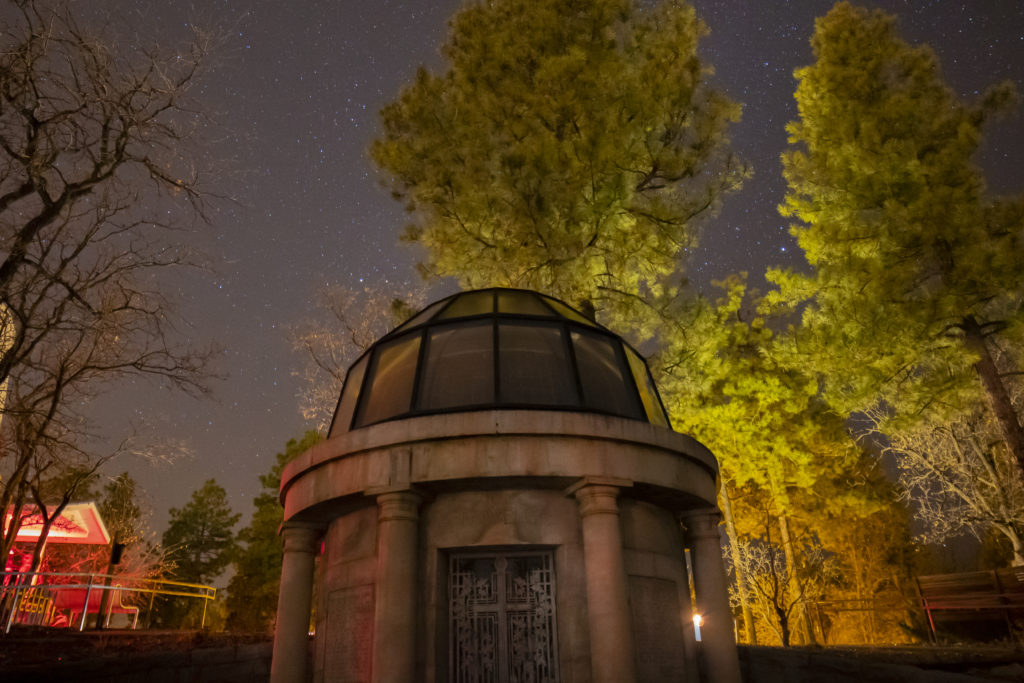
Percival Lowell's Mausoleum | Max Devc
Photo: Percival Lowell’s Mausoleum | Max Dev
American businessman, author, mathematician, astronomer, and observatory founder Percival Lowell passed away on November 12, 1916, just 14 years before the fabled ‘Planet X’ he spent a portion of his life searching for would be discovered. His final resting place, a mausoleum, sits just a stone’s throw from the dome of the historic 24″ Clark Refractor that he used to scour the surface of Mars for signs of intelligent life. During a time in which true enjoyment of the sciences was a luxury often reserved for the academic elite, Percival sought to popularize astronomy and share the wonders of the cosmos with the world at large.
Construction on Percival’s mausoleum was initiated by his widow, Constance Lowell, shortly after his death in 1916. While the structure being built, his coffin was placed in a burial mound nearby. Percival was the only member of his immediate family to be buried somewhere other than their plot in Mount Auburn Cemetery in Middlesex County, Massachusetts. However, a cenotaph dedicated to Percival’s memory sits on his family’s plot, carved on petrified wood from Arizona as a nod to his burial location. The granite blocks used to build the mausoleum came from the same quarry as the blocks used to build the archway over Mount Auburn, possibly a way of intentionally providing a connection between Percival’s burial place and his family’s. The quarry also provided the granite used to build Bunker Hill Monument in Quincy, Massachusetts.
Having spent much of his life in telescope domes, it seems only fitting that Percival’s remains were laid to rest in a structure built to resemble one. The circular tomb is topped with a stained-glass dome that scatters blue and purple fractals of light across its interior, which can be glimpsed through the grating on the entrance. The intention behind giving the mausoleum a transparent roof was to provide Percival with a view of the cosmos that he loved, even in death.
The mausoleum was finally completed in 1923, and Percival’s body was interred soon after.